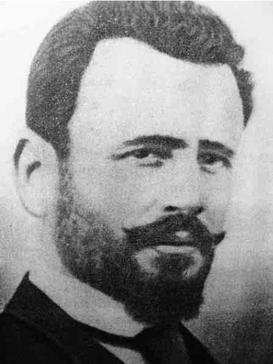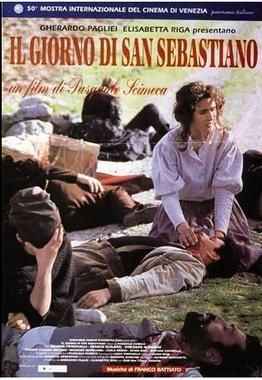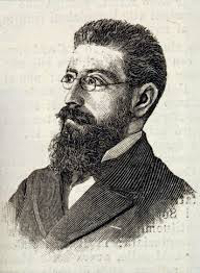Related Research Articles

Giuseppe Schirò was an Arbëresh neo-classical poet, linguist, publicist and folklorist from Sicily. His literary work marked the transition from the Arbëresh language to modern Albanian literature in Italy. He was a major protagonist of the Rilindja, the Albanian cultural awakening or Albanian Renaissance, in Italy.

The Fasci Siciliani, short for Fasci Siciliani dei Lavoratori, were a popular movement of democratic and socialist inspiration that arose in Sicily in the years between 1889 and 1894. The Fasci gained the support of the poorest and most exploited classes of the island by channeling their frustration and discontent into a coherent programme based on the establishment of new rights. Consisting of a jumble of traditionalist sentiment, religiosity, and socialist consciousness, the movement reached its apex in the summer of 1893, when new conditions were presented to the landowners and mine owners of Sicily concerning the renewal of sharecropping and rental contracts.
Piana degli Albanesi is a comune with 6,128 inhabitants in the Metropolitan City of Palermo, Sicily. The official name of the town was Piana dei Greci until 1941. The municipality is situated on a mountainous plateau and encircled by high mountains, on the eastern side of the imposing Mount Pizzuta, the city, which is mirrored on a large lake, is 24 km from the metropolitan capital.

The Portella della Ginestra massacre refers to the killing of 11 people and 27 wounded during May Day celebrations in Sicily on 1 May 1947, in the municipality of Piana degli Albanesi. Those held responsible were the bandit and separatist leader Salvatore Giuliano and his gang, although their motives and intentions are still a matter of controversy.

Rosario Garibaldi Bosco was an Italian Republican-inspired socialist, politician and writer from Sicily. He was one of the leaders of the Fasci Siciliani, a popular movement of democratic and socialist inspiration in 1891-1894.

Giuseppe De Felice Giuffrida was an Italian socialist politician and journalist from Sicily. He is considered to be one of the founders of the Fasci Siciliani a popular movement of democratic and socialist inspiration. As the first socialist mayor of Catania in Sicily, from 1902 until 1914, he became the protagonist of a kind of municipal socialism.

Nicola Barbato was a Sicilian medical doctor, socialist and politician. He was one of the national leaders of the Fasci Siciliani dei Lavoratori a popular movement of democratic and socialist inspiration in 1891-1894, and perhaps might have been the ablest among them, according to the Marxist historian Eric Hobsbawm.

Bernardino Verro was a Sicilian syndicalist and politician. He was involved in the Fasci Siciliani a popular movement of democratic and socialist inspiration in 1891-1894, and became the first socialist mayor of Corleone in 1914. He was killed by the Mafia.

Lorenzo Panepinto was an Italian politician and teacher. He was the founder of the Fascio dei lavoratori in his hometown Santo Stefano Quisquina, editor of the newspaper La Plebe and member of the Comitato della Federazione Regionale Socialista. He was killed by the Sicilian Mafia.

The Caltavuturo massacre took place on January 20, 1893, in Caltavuturo in the Province of Palermo (Sicily), when during the celebration of Saint Sebastian, some 500 peasants returning from the symbolic occupation of 250 hectares of communal land were dispersed by soldiers and policemen, killing 13 and wounding 21 peasants. The claim for land reform was one of the demands of the Fasci Siciliani, a popular movement of democratic and socialist inspiration in 1891-1894.
Francesco Cuccia, also known as Don Ciccio, was a member of the Sicilian Mafia and one-time mayor of Piana dei Greci. He is best known as the Mafia boss who triggered Benito Mussolini’s war on the Mafia, after humiliating him while visiting Piana dei Greci in 1924. He was described by the writer Norman Lewis as a Mafia potentate with an inflamed sense of his own importance. The Sicilian writer Giuseppe Passarello called him "Cuccia il sanguinario".

Il giorno di San Sebastiano is an Italian film written and directed by Pasquale Scimeca. The film is based on true historical events, the Caltavuturo massacre that took place on January 20, 1893, in Caltavuturo in the Province of Palermo (Sicily), during the celebration of Saint Sebastian.

The Giardinello massacre took place on December 10, 1893, in Giardinello in the Province of Palermo (Sicily) during the Fasci Siciliani uprising. Eleven people were killed and 12 seriously wounded after a rally that asked for the abolition of taxes on food and disbandment of the local field guards. The protestors carried the portrait of the King taken from the municipality and burned tax files.

Nicola Petrina was an Italian socialist and politician from Sicily. He was one of the national leaders of the Fasci Siciliani a popular movement of democratic and socialist inspiration from 1891 to 1894.

Agostino Lo Piano Pomar was a Sicilian lawyer, socialist and politician. He was one of the national leaders of the Fasci Siciliani a popular movement of democratic and socialist inspiration in 1891-1894.

The Lercara Friddi massacre took place on Christmas-day 1893 in Lercara Friddi in the Province of Palermo (Sicily) during the Fasci Siciliani uprising. According to different sources either seven or eleven people were killed and many wounded.

The Sicilian Socialist Party is a democratic socialist and autonomist political party in Sicily. The party was founded on 21 May 2013 and considers itself to be the re-foundation of the 1893 Sicilian federation of the emerging Italian Socialist Party (PSI), often referred to as the Sicilian Socialist Party, which was founded by the leaders of Fasci Siciliani popular movement during a congress in Palermo on 21–22 May 1893. The PSS re-emerged exactly after 120 years from the first congress of the Fasci and in the same place of the 1893 assembly.

Giacomo Montalto was an Italian Republican-inspired socialist, politician and lawyer. He was one of the leaders of the Fasci Siciliani, a popular movement of democratic and socialist inspiration in 1891-1894.

Giovanni Noè was an Italian lawyer, anarchist and politician, involved in the Fasci Siciliani, a popular movement of democratic and socialist inspiration in 1891–1894. He was elected in Italian Chamber of Deputies in 1900 and 1904.
References
- ↑ Hobsbawm, Primitive rebels, p. 99
- 1 2 (in Italian) L'anima femminile dei Fasci siciliani, La Repubblica, 9 March 2010
- ↑ Fracchia, Joseph (2010). "Hora": Social Conflicts and Collective Memories in Piana degli Albanesi. Past & Present, Volume 209, Issue 1, November 2010, Pages 181–222, https://doi.org/10.1093/pastj/gtq030
- 1 2 Guglielmo, Living the Revolution, pp. 36-39
- ↑ (in Italian) Donne ribelli nella Sicilia dei Fasci, La Sicilia, February 6, 2012